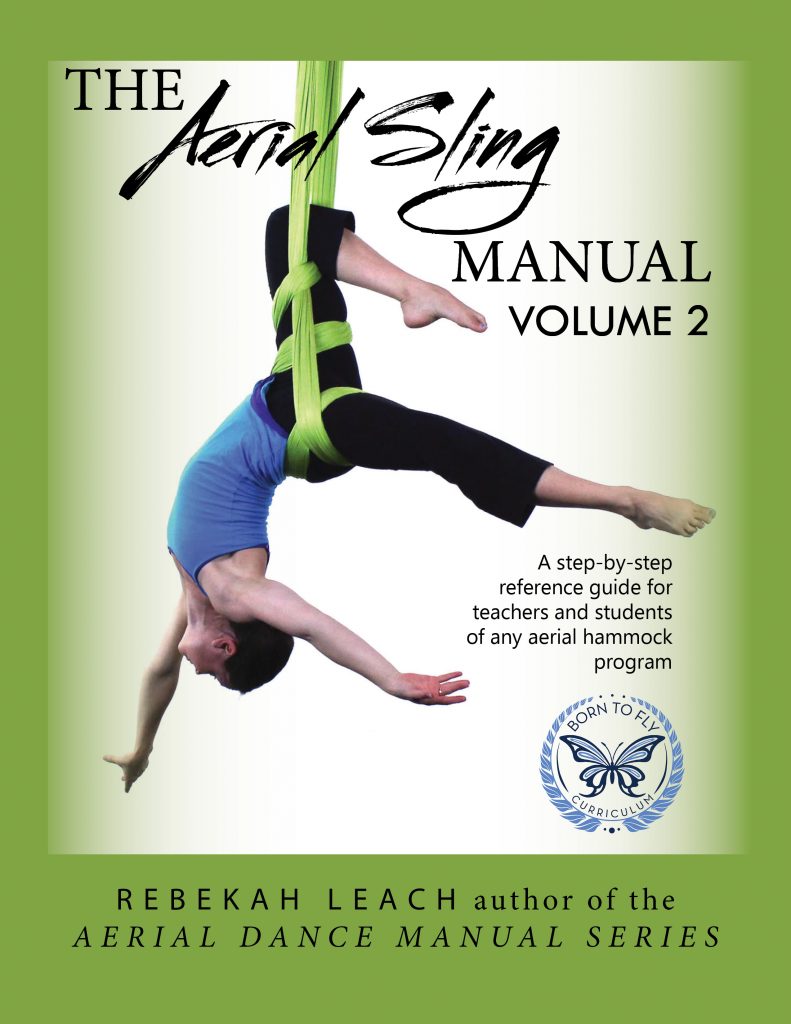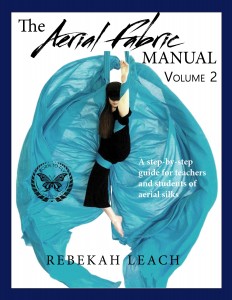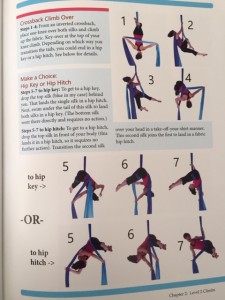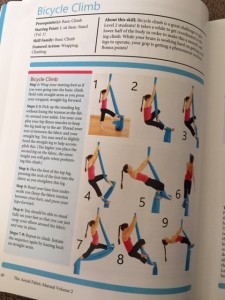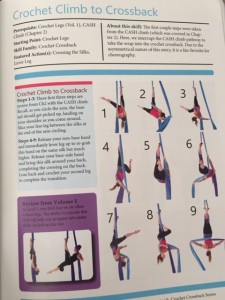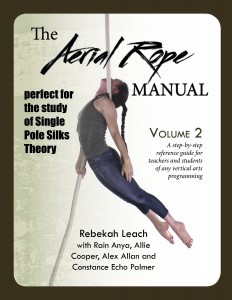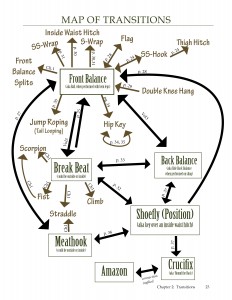One of the biggest highlights for my career last year was the release of The Aerial Sling Manual Volume 2. I released it in the summer time and saw great sales thanks to supports from this website and my Instagram channel (@borntoflycurriculum). “Great sales” is relative as my aerial influence is quite small, but in terms of the sales my books normally see, I was thrilled with the outcome. I was also thrilled with the feedback. So many aerialists are tagging me on social media with what they were able to uncover after soaking in the material from the book. I also launched some online courses based on the chapters of the book that were highly successful. I definitely feel most at-home on sling and I think that really showed through this book and the courses that I ran last year.
Below is the introduction from inside the book in order to give you a complete overview of what you can find in this book. More than any other book I have ever created, I coined new terms for the skills. While many other apparatuses were already established by the time I wrote my book on the topic, sling has not been well-formed, and the language on it is very sparse and inconsistent. I did my best to create a consistent vocabulary that helps to tackle the skills and break them down. Many readers will have a hard time adapting the “newness” of the language, as I can almost guarantee that it is different from your local studio (unless your local studio includes me as your teacher), but once you get immersed in this version of sling, you may find yourself making connections that were on the tip of your aerial brain but not quite clear until the language was able to articulate them for you.
I also released a special sling workshop into my video library in December 2021, but it was available for a limited time. It was a great overview of the material included in the summary below. I plan on releasing a few more bonus workshops into my video library this year, so stay tuned! I announce them in my newsletters which are coming out about once every couple months. Double check that you are on the current mailing list (available to members only).
ABOUT THE SLING BOOK VOL 2
This book starts off with some conditioning drills in Chapter One. I find drills a very important part of each class, especially inversion work here in Level 2. Regular practice of these will allow the body to grow and maintain strength. Just make sure to keep enough variation in your practice to keep the muscles “guessing”, allowing the mind to stay involved in your training and prevent ruts from growing too strong. Chapter One also includes some foundational vocabulary and other odds and ends that are appropriate when beginning Level 2.
Chapter Two covers arabesques in a brand new way that I created in order to help establish consistent vocabulary for the various ways a body could lean to one side in the sling. The main two types of arabesques are front arabesque and back arabesque. Back arabesque is popular on fabric, where you commonly see it used in conjunction with things like crossback straddle. In sling world, front arabesque is actually the shining start when it comes to crossback straddle (which is the topic of Chapter Eight). Chapter Two also covers running man, as many of the entries fall out easily from arabesques.
Chapters Three & Four cover the pair of reverse skills: catcher’s and seatbelt, respectively. The whole world of sling can be split right down the middle into catcher’s-land and seatbelt-land, and I find it important to juxtapose these two topics for comparison discussions. Chapter Four also covers the hip corset topic, which is where catcher’s and seatbelt are united into one skill together.
Chapter Five is all about getting off your hands for a moment and getting upside-down on your knees and ankles. I cover ankle hangs and knee hangs mainly in this chapter. I tried to further stay off the hands in Chapter Six by spending time around the hips with another pair of reverse skills: side back balance and hip key. Side back balance is one of my favorite skills, so that got a bit more emphasis.
Chapter Seven covers beats and drops. Building a foundation is so important for me that I tend to push drops far back into the curriculum, so there are not as many drops as one might typically expect for this point in the curriculum. Nevertheless, you should find all the classics here.
As I mentioned earlier, Chapter Eight covers crossback straddle. It also covers a hodgepodge of skills from fabric. One important topic here is “high catcher’s,” which will be developed more in Level 3.
By the end of Level 2, my expectations for students is that they have a good grasp of a wide range of topics. They should also have super clean inversions, so don’t neglect those drills! What you can look forward to after this level is a season of building harder skills as well as diving deeper into the complexities of sling. But, no hurry. Enjoy the journey!
PURCHASING INFO
You can download the digital version or purchase the paperback from this website. (Sorry, we only ship to USA addresses — if you live internationally, please email mail@firetoys.com to request them to put it in their shop so that you can purchase it.)
One great perk of the digital download is that there are LINKS to all the videos from the video library, which is extremely handy for seeing the skill played out when you need that extra visual reminder. Please note that the video library is sold separately and the videos themselves do not come with the book. This is often a point of confusion. They are linked but they are two separate products: the book is one product. The video library is it’s own product. They are designed to work together, but we don’t sell them together. Sorry! However, if you email us (info@aerialdancing.com) and ask nicely, we’re always happy to let new members trial a membership if they bought a download and want to peak into our library to see what all the fuss is about. Mention this blog. 🙂
Want to save 10% on your purchase? Make sure that you are logged in to your membership account (which is free, although the free version doesn’t include the video library). All members automatically save 10% on their cart when they are logged in to make a purchase.
Thank you so much for all the support. I am really excited to start work next year on more books. Currently, my top three projects are a Trapeze Manual, Fabric Vol3 and Sling Vol3. Facebook message me to tell me which book you think I should work on next!

